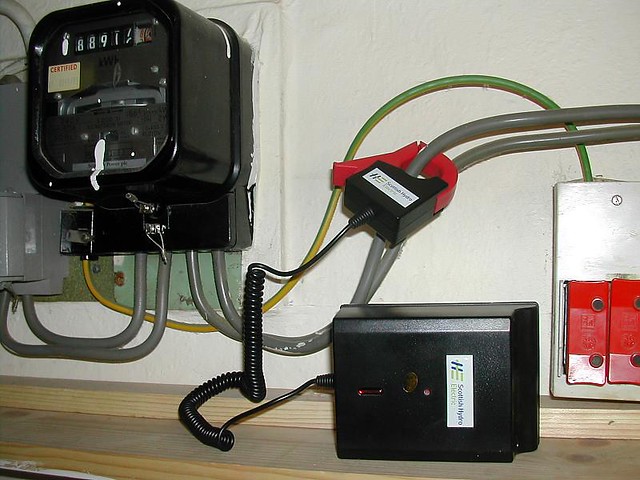How To Cheat Electric Meter Digital

[Ben Krasnow] is back, and this time he’s tearing down a kilowatt hour meter (kWh). While not as exciting as making aerogel at home, or a DIY scanning electron microscope, [Ben’s] usual understated style of explaining things makes a complex topic simple to digest.
These old mechanical meters have been a staple on the sides of houses and businesses since the dawn of commercial power. We always thought the meters were a basic electric motor. Based upon [Ben’s] explanation though, these meters are a complex dance of electromagnetic fields. Three coils create magnetic fields near an aluminum disk. This creates eddy currents in the disk resulting in a net torque. The disk spins, turning a clockwork and advancing the dials.
You probably cannot. A significant reason for introducing digital power meters -replacing the older technology - was to overcome the single problematic issue of the older and venerable technology. Modern meters measure voltage, current and phase a.

Why three coils? One is a high turn high gauge voltage coil, and the other two are low turn low gauge current coils. The voltage coil has to be phase shifted 90 degrees to create the proper torque on the disk. Confused yet? Watch the video! [Ben] does a much better job explaining the field interactions than we could ever do in text.
One interesting point is the fact that the disk is so tightly balanced that a small “anti-creep hole” is used to disrupt the eddy currents ever so slightly. This hole keeps the disk from slowly turning when no load is being placed on the meter.
[Ben] doesn’t mention the old tales of stopping electric meters. We all remember those ads in the back of PopSci and other magazines. Mount and blade warband download. While impractical, apparently some of the meter stopping techniques do work. It should be noted though that power companies will notice changes in a given customer’s electric consumption, so we can’t recommend trying that one at home.
A group of Dutch scientists have been testing out some of today’s “smart” electrical meters to check their accuracy, among other things. Not ones to disappoint, the scientists have found consistently false readings that in some cases are 582% higher than actual energy consumption.
How To Bypass Digital Electric Meter In India
With experiments lasting for six months, the researchers tried to focus on meters representative of those commonly used in the Netherlands and manufactured between 2004 and 2014. Moreover, the researchers tried to reproduce standard household energy consumption patters rather than focusing on stress tests.
Their results? Well, “results varied wildly, with some meters reporting errors way above their disclosed range, going from -32% to +582%. Tests with uncommon results were repeated several times and the results were within a few percents of the original.” Moreover, “The greatest inaccuracies were seen when researchers combined dimmers with energy saving light bulbs and LED bulbs.” Not constrained to energy saving light bulbs, the inaccuracies are, ironically, tied to devices with integrated energy saving features. (Certainly makes us want to keep a close eye on our electric meters.)
“The reason for faulty readings appears to be the current sensor, and the associated circuitry,” said researchers. “The experimental results […] show that static energy meters can be pushed into faulty reading (positive and negative) if sufficiently fast pulsed currents are drawn by the consumer”
How To Cheat Electric Meter Digital Reader
It is worth noting that there is contradictory research published by “the European voice of the providers of smart energy solutions” that maintains that “there is no reason to question smart metering technology”. Still, we wouldn’t blame you if you wanted a second opinion.
Thanks [acs] for sending this in!